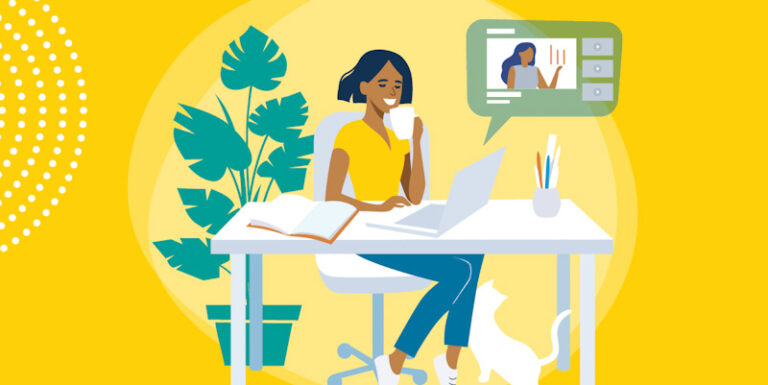Duplicated content is a cause for concern. The internet has made it very simple for people to access information. Individuals are often misusing the easy availability of information on the internet by copying content. Plagiarism happens when the content contains copied passages or idea that has no citations.
As freelance writers, it is vital to write responsibly. Plagiarism is no the trait of a responsible writer. However, there are multiple cases where articles are partially or fully copied from one or multiple sources. Content stealers do not mention the source. They copy the content and either paste it in the document or rephrase/rearrange it slightly to alter the appearance.
With the increasing surge of plagiarism, it becomes vital to take steps towards the prevention of plagiarism. It is essential to curb plagiarism because it destroys the ability to create unique content. Once people get used to the habit of simply copying or rephrasing previous content, their ability to think and write tends to decrease over time.
On the other hand, rampant plagiarism crowds the internet with copies of the same content. In the academic world, uncontrolled plagiarism also leads to the same problems. Blatant plagiarism implies no or very little original research, which goes against research or educational institute’s primary objective.
Hence, it is necessary to implement stringent measures that will stop the sporadic growth of plagiarism.
Methods to prevent plagiarism
It is vital to know that one can easily detect plagiarized content with a plagiarism detector’s help. If users do not find plagiarism, it puts a huge question mark on the ethics of the writer/researcher. When plagiarism is detected in a document, the writer loses the trust of the client.
It might not be easy to procure written assignments when the label of plagiarism gets slapped on the writer. Honest students/writers will not want to jeopardize their careers due to plagiarism. Hence, it is in the best interest of the person writing the article to care about errors that can lead to unintentional plagiarism. There are a few steps that can help people to avoid plagiarism. These steps are:
1. Creative content creation
Freelance writers are often tasked with the creation of original content. Original content is not just about putting together sentences that have not been published yet. It is a creative process where the writer studies the topic to offer better and newer perspectives.
As students, individuals are often encouraged to think independently. Independent thinking leads to the making of original content. However, creating original content is not an effortless process because a person needs to perfect the content to make it suitable for publication.
With new content getting published rapidly on the internet, it becomes pretty difficult to arrive at novel inferences for a common topic. However, committing plagiarism is not the solution because it will only destroy the reputation of the writer. Hence, focusing on diligent research and original content creation is the key to avoiding plagiarism.
2. Hone language skills
Articulation is vital for presenting original findings/perspectives on a topic. Language plays an essential role in presenting the argument to the readers.
The writer needs to have a firm grasp of the language to pen down the content. A good vocabulary is essential. There is no need to make sentences with difficult words, but finesse is necessary. Therefore, intelligent use of words is necessary. Along with vocabulary, it is necessary to be well-acquainted with the rules of grammar.
Grammatical and spelling errors create a negative impression. Lack of basic language skills also propels people to plagiarize because they are not confident about their writing style. Therefore, automatically, working on improving the writing skills eliminates the need to plagiarize.
3. Correct use of citations and references
There is a vast gamut of resources available online. It is effortless to get confused about the use of sources in a text. People often forget to cite references correctly. The confusion gets heightened by a lack of knowledge of citation styles. There is a great need to understand the meaning and importance of citations.
One should judiciously use the references. All the cited works have to be recorded. The writer should be aware of the citation style to be followed for the paper/article. Correct formatting of the works cited page results in reducing the chances of accidental plagiarism.
4. Proper use of paraphrasing
Paraphrasing is writing a passage from a text in their words. Paraphrasing is not plagiarism when the paraphrased passage is cited. However, free paraphrasing tools are used for manipulating the appearance of a passage to avoid plagiarism detection.
It is vital to keep in mind that paraphrasing is ethical only when it is sparingly done along with the citation. It is necessary to steer away from free paraphrasing tools present only for data manipulation to evade plagiarism scanners’ detection.
5. Employ a plagiarism checker
Checking a paper for plagiarism can be a tedious process when one performs it manually. It takes up much time to check that all reference passages are correctly accounted for on the works cited page. After all that effort, a minor error can land a person with a plagiarism complaint.
Online plagiarism detectors are present to alleviate the problems related to plagiarism checking online. An online plagiarism checker is a helpful tool that enables a person to check a document for plagiarism.
The automatic scanning of the plagiarism checker gets completed within a few seconds. The tool scans the uploaded text and highlights the parts that have been copied from sources. Many AI-powered anti-plagiarism software applications help the writer to get an accurate result in no time.
The advanced features of anti-plagiarism software show the user the source’s details from where particular passages are copied. The online application also provides the person with a plagiarism report.
Details of the plagiarism instances and the quality of the content are there in the report. A plagiarism score is also there so that the user can gauge the extent of plagiarism present in the paper.
Citing the source is vital while using a reference in an article/academic paper. However, to avoid plagiarism successfully, it is sensible to use a plagiarism scanner for checking the content. The plagiarism report of the uploaded document helps in correcting inadvertent errors present in the article. Hence, prevention of plagiarism is possible with the help of high-quality anti-plagiarism software.








